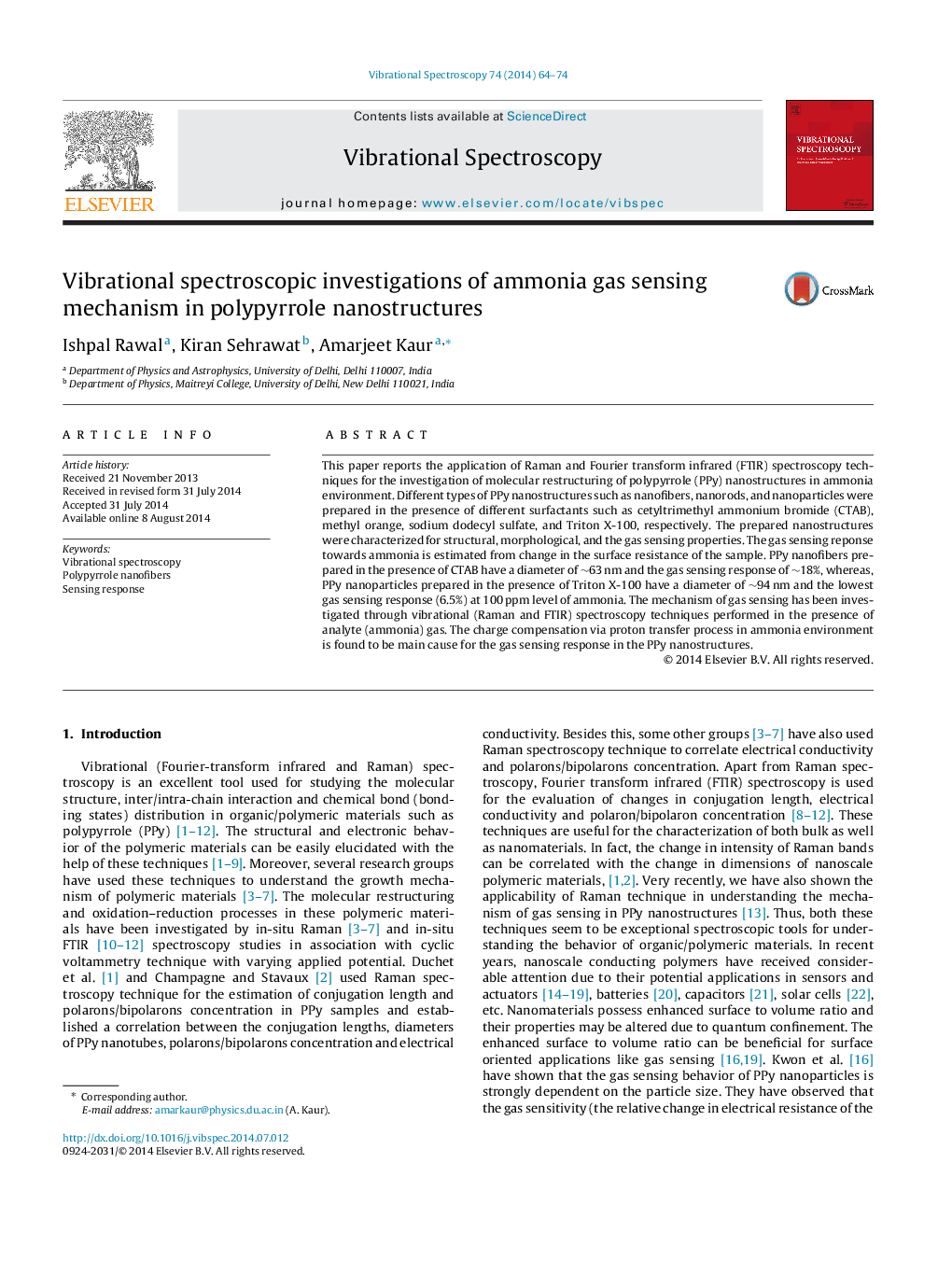| Article ID | Journal | Published Year | Pages | File Type |
|---|---|---|---|---|
| 1249933 | Vibrational Spectroscopy | 2014 | 11 Pages |
•Polypyrrole nanofibers/nanoparticles were grown in surfactant mediated approach.•The prepared nanostructures were tested for gas sensitivity in ammonia environment.•Raman and FTIR spectroscopic measurements were performed in ammonia environment.•The electrical gas sensing is correlated with the molecular restructuring of PPy.
This paper reports the application of Raman and Fourier transform infrared (FTIR) spectroscopy techniques for the investigation of molecular restructuring of polypyrrole (PPy) nanostructures in ammonia environment. Different types of PPy nanostructures such as nanofibers, nanorods, and nanoparticles were prepared in the presence of different surfactants such as cetyltrimethyl ammonium bromide (CTAB), methyl orange, sodium dodecyl sulfate, and Triton X-100, respectively. The prepared nanostructures were characterized for structural, morphological, and the gas sensing properties. The gas sensing reponse towards ammonia is estimated from change in the surface resistance of the sample. PPy nanofibers prepared in the presence of CTAB have a diameter of ∼63 nm and the gas sensing response of ∼18%, whereas, PPy nanoparticles prepared in the presence of Triton X-100 have a diameter of ∼94 nm and the lowest gas sensing response (6.5%) at 100 ppm level of ammonia. The mechanism of gas sensing has been investigated through vibrational (Raman and FTIR) spectroscopy techniques performed in the presence of analyte (ammonia) gas. The charge compensation via proton transfer process in ammonia environment is found to be main cause for the gas sensing response in the PPy nanostructures.
